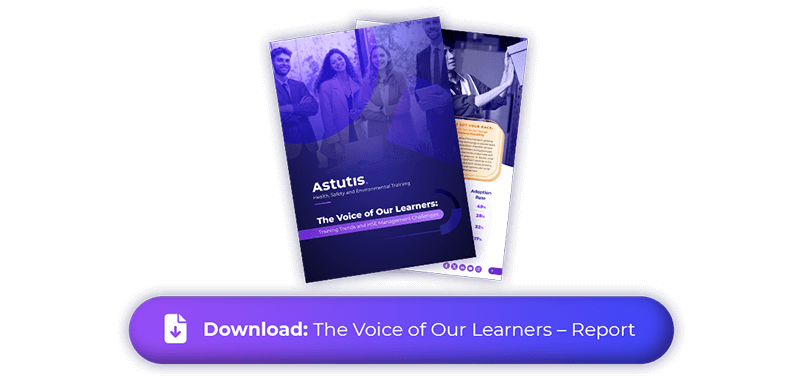The Pros & Cons of Artificial Intelligence Use in Health and Safety
Artificial Intelligence (AI) has become a central talking point for industries across the globe. Its introduction has already transformed the way organisations operate including how they manage health and safety. But is this a good thing?
The answer: it’s complicated. Balanced views on it’s benefits and drawbacks must be considered to decide whether it’s right for individual use cases, rather than a blanket statement that does not consider the specific health and safety requirements of an organisation.
Let’s take a look at the benefits and drawbacks.
Does Using AI Benefit Health and Safety?
We’ll start with the good news. The widespread adoption of AI into our day-to-day work has several benefits for health and safety, having the potential to:
- Improve Hazard Detection
- Encourage Data Orientated Decisions
- Enhance Training and Engagement
- Automate Reporting and Compliance
Improved Hazard Detection
AI-powered systems can analyse data from CCTV footage, wearables technologies (wristbands etc.), and sensors to detect unsafe behaviours or hazardous conditions in real time.
We’ve seen construction industries provide real time alerts to on-site workers about vehicles passing through the area, enabling them to be aware of potential risks before they occur.
Additionally, computer vision can be used on construction sites to ensure workers are wearing the correct PPE, or to spot when someone enters a restricted area.
Data-Driven Decision Making
Traditional safety audits often rely on manual inputs and retrospective analysis. AI systems can analyse vast volumes of health and safety data quickly – identifying trends, predicting high-risk areas, and supporting better-informed decisions.
The result? Faster insights and more effective safety interventions – a constant pursuit for health and safety professionals.
Enhanced Training and Engagement
Virtual reality (VR), often powered by AI, can also simulate high-risk scenarios in a safe environment, helping workers better prepare for real-world situations.
As a training provider ourselves, we remain at the forefront of technological learning advancements whilst leveraging the expert knowledge of our tutors and course creators.
Automated Reporting and Compliance
AI tools can automatically generate reports, track compliance metrics, and flag anomalies. This not only saves time but reduces human error, ensuring regulatory requirements are met consistently.
Our latest annual learner report found that only 28% of HSE professionals are leveraging AI tools in the daily work, indicating that the much-discussed technology has yet to take a strong foothold in the field. For more unique insights on the state of the health and safety training industry including new technologies, employee attitudes and training budget projections download the full report below.
What Are the Challenges of AI in Health and Safety?
As is to be expected with transformative technology, the Health and Safety Executive (HSE) recently went on record to say that AI requires an approach that considers the potential risks involved:
“AI is rapidly developing in capability and is a transformative technology. It can create and exacerbate health and safety risk but also has the potential to bring real benefits for health and safety.”
Despite the benefits that AI offers to health and safety, it could also come with:
- Cost and Implementation Barriers
- Data Privacy and Surveillance Concerns
- Over-Reliance on Technology
- Bias and Inaccuracies in AI Models
Cost and Implementation Barriers
Introducing AI into a health and safety management system can be expensive. Costs include software, hardware (like sensors or wearables), integration with existing systems, and staff training.
For smaller businesses, the excessive costs could be a significant barrier.
Data Privacy and Surveillance Concerns
Monitoring systems that track employee movements or behaviour can raise ethical and legal questions. It’s crucial to ensure that any AI system complies with GDPR and respects employee privacy.
Clear policies and open communication are essential to avoid mistrust or resistance from staff.
Over-Reliance on Technology
While AI can enhance safety, it shouldn’t replace human judgment or oversight. There’s a risk that safety teams may become too reliant on systems, potentially overlooking issues that fall outside an algorithm’s scope.
AI should support—not substitute—the role of health and safety professionals.
Bias and Inaccuracies in AI Models
AI systems are only as good as the data they’re trained on. If that data is incomplete or biased, the outcomes could be flawed—leading to inaccurate risk assessments or unjust disciplinary actions.
It’s vital to audit and test AI tools regularly to ensure they function fairly and effectively.
Don’t Underestimate the Value of Training Your Employees
AI in health and safety is an exciting development, offering innovative solutions to age-old challenges. Its ability to automate tasks, enhance training, and detect risks early has the potential to significantly improve workplace safety.
However, it must be implemented thoughtfully. Costs, ethical concerns, and the importance of human oversight cannot be ignored.
Proper training for employees remains the best approach for optimising health and safety. Whatever an employee’s role in a business may be, we have training courses that will help them to make smarter, safer decisions that benefit the entire workplace.

Real Life Stories




